Just when we’d started to get used to working in lockdown, the Covid-19 landscape shifts again. While some industries and sectors (those deemed essential) have obviously continued in extraordinary circumstances, for many of us the lockdown period meant almost total remote working, colleagues being furloughed and wholesale changes to our rhythm, focus and ways of working.
We adapted. And created new temporary meeting structures, embraced the virtual world of connections and were mostly energised by an adrenaline rush of the initial disruption.
As we now start to head into a new phase – a phase of transition towards a new normal– leaders are having to disassemble those new temporary practices and assemble ‘next phase’ temporary/semi-permanent structures in which their businesses can operate.
This headline caught my eye in the report ‘A sustainable exit strategy: Managing uncertainty, minimising harm’ from the Tony Blair Institute for Global Change: ‘Uncertainty accentuates the need for a clear plan’. But how to do that in an unprecedented world? How can you create a clear plan within a landscape of uncertainty?
In service of creating a plan, leaders are facing unprecedented decisions right now, both in terms of volume, criticality, speed and context. Indecisiveness is not an option. Fact based decisions, based on collation of evidence and history, trials and stakeholder perspectives may also be beyond the possible.
Recognise that some decisions are ‘51/49ers’. Where multiple paths have great benefits but also potential pitfalls. It’s useful to recognise these and to release your decision making from the fear of being ‘wrong’- which leads to indecisiveness, perpetual evidence seeking and angst (especially when you and other stakeholders are ‘pitching’ for alternative possible paths.)
Moving to an ‘assumption based’ decision making is a useful guiding principle in creating your plan – providing:
· You can clearly articulate the assumptions you are making in context of the decision
· You tighten the ‘decision-making’ elective. (Interesting provocation from a recent PWC podcast recommends reducing using decision making groups from 10-12 participants, to 3 or 4)
· You seek out the perspective of a Devil’s Advocate – and can’t rely on the ‘casual collisions’ or the ‘water cooler’ moments to gain their insight
· And, perhaps most importantly, you ground the decision soundly in your overarching purpose or goal.

When much else from your corporate landscape may be adrift, the team, function or organisational purpose should remain your ‘lighthouse’, guiding you away from dangerous waters, cutting through the maelstrom of information, changing certainties and ‘noise’.
But don’t confuse strong alignment to your ‘lighthouse’ with the need to determine a solid, unbendable course to get you to safe waters. Agility and flexibility in the process and activities of your plan will remain vital leadership elements as we move through ‘transition’ and towards a ‘new normal.’





